Swimming pool service and maintenance ensure a clean, safe, and enjoyable swimming experience. It involves regular tasks such as chemical balancing, filtration system checks, debris removal, and equipment maintenance. Professional services can provide expert care, prevent costly repairs, and extend the lifespan of your pool.
Understanding the Basics of Swimming Pool Service and Maintenance
Understanding the basics of swimming pool service and maintenance involves recognizing the importance of regular cleaning, maintaining proper water chemistry, and the role of pool filters and pumps.
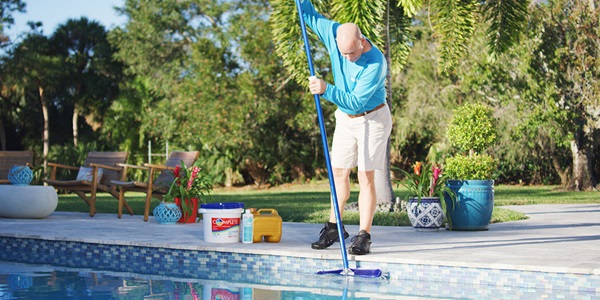
Why is regular pool cleaning and maintenance crucial?
Prevents Algae Growth: Regular cleaning and maintenance help prevent algae growth by removing organic debris and maintaining proper chemical balance in the water.
Maintains Water Clarity: Routine cleaning tasks such as skimming, vacuuming, and brushing help keep the pool water clear and free of debris, ensuring a pleasant swimming experience.
Extends Equipment Lifespan: Regular maintenance of pool equipment such as pumps, filters, and heaters helps prolong their lifespan and ensure optimal performance.
Ensures Safety: Clean and well-maintained pools are safer for swimmers, reducing the risk of accidents and waterborne illnesses.
Decoding water chemistry: The heart of swimming pool maintenance
pH Balance: Maintaining proper pH levels (typically between 7.2 and 7.6) is essential for water clarity, swimmer comfort, and the effectiveness of other pool chemicals.
Chlorine Levels: Chlorine kills bacteria and other harmful organisms in the water, preventing algae growth and maintaining water sanitation. The ideal chlorine level is typically between 1.0 and 3.0 parts per million (ppm).
Alkalinity and Calcium Hardness: Alkalinity helps stabilize pH levels, while calcium hardness prevents corrosion of pool surfaces. Both parameters should be kept within recommended ranges to avoid water imbalances and equipment damage.
The role of pool filters and pumps in clean swimming pool maintenance
Pool Filters: Filters remove debris, dirt, and other particles from the water, keeping it clean and clear. Common types of pool filters include sand, cartridge, and diatomaceous earth (DE) filters.
Pool Pumps: Pumps circulate water through the filtration system, ensuring thorough cleaning and distribution of chemicals throughout the pool. Proper pump operation is crucial for maintaining water clarity and preventing stagnation.
Backwashing and Cleaning: Regular backwashing or cleaning of pool filters is necessary to maintain their effectiveness. This helps remove trapped debris and prevent clogging, ensuring optimal filtration and water quality.
Comprehensive Pool Cleaning Techniques Every Owner Should Know
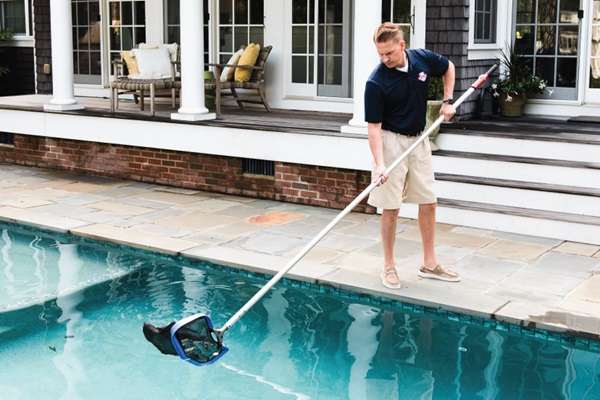
Vacuuming: The ultimate guide to removing debris from the pool
Manual Vacuuming: Use a manual vacuum cleaner attached to a telescopic pole to manually vacuum the pool floor, walls, and steps. Move the vacuum head in overlapping strokes to ensure thorough coverage and the removal of debris.
Automatic Vacuuming: Invest in an automatic pool cleaner, such as a robotic or suction-side cleaner, for hands-free vacuuming. These devices move around the pool independently, scrubbing and vacuuming the surfaces to remove dirt and debris.
Frequency: Vacuum the pool at least once a week or as needed, depending on the amount of debris and the pool’s usage. Pay special attention to areas with poor circulation or where debris tends to accumulate, such as corners and steps.
Brushing the pool surface to prevent algae and maintain pool care
Manual Brushing: Use a pool brush attached to a telescopic pole to manually brush the pool walls, steps, and floor. Brushing helps remove algae, dirt, and other debris that may be clinging to the surfaces.
Brushing Technique: Brush the pool surfaces in overlapping strokes, starting from the shallow end and working your way towards the deep end. Pay attention to areas with poor circulation, such as behind ladders and around skimmer baskets.
Frequency: Brush the pool surfaces at least once a week or as needed to prevent algae growth and maintain water clarity. Brushing is especially important after heavy rains, pool parties, or periods of high usage.
The importance of skimmer baskets in keeping your pool clean
Function: Skimmer baskets are located in the skimmer box and serve as the first line of defense against debris entering the pool. They capture leaves, insects, and other floating debris before it sinks to the bottom.
Maintenance: Check and empty the skimmer baskets regularly to ensure they are not clogged or obstructed. Clean the baskets with a hose or brush to remove any buildup of dirt or debris.
Placement: Position the skimmer baskets strategically around the pool to maximize debris capture. Consider adding additional skimmer baskets or using floating skimmers for larger pools or areas with heavy debris.
Pool Repair and Maintenance: Avoiding the Common Pitfalls
Avoiding common pitfalls in pool repair and maintenance involves identifying common repair needs, understanding the differences between professional pool repair and DIY solutions, and making informed decisions to ensure the longevity and safety of your pool.

Identifying common pool repair needs: From leaks to equipment malfunctions
Leaks: Common signs of a pool leak include a drop in water level, wet spots around the pool, and increased water bills. Leaks can occur in the pool shell, plumbing lines, or equipment, requiring prompt detection and repair to prevent water loss and damage.
Equipment Malfunctions: Pool equipment such as pumps, filters, heaters, and chlorinators may experience malfunctions or failures over time. Symptoms of equipment issues include unusual noises, poor water circulation, and erratic performance. Prompt diagnosis and repair are necessary to maintain proper pool function.
Cracks and Surface Damage: Cracks, chips, and surface damage on pool walls, floors, and tiles can compromise the structural integrity of the pool and create safety hazards. Addressing surface damage promptly can prevent further deterioration and costly repairs.
Chemical Imbalances: Imbalances in water chemistry can lead to a range of problems, including algae growth, staining, and corrosion of pool surfaces and equipment. Regular testing and adjustment of pH, chlorine, alkalinity, and calcium hardness levels are essential for preventing chemical-related issues.
Professional pool repair vs. DIY: What you need to know?
Expertise and Experience: Professional pool repair technicians have specialized knowledge, training, and experience to diagnose and address a wide range of pool issues efficiently and effectively.
Quality Assurance: Professional pool repair services typically come with warranties or guarantees on workmanship and materials, providing added peace of mind and protection against future issues.
Safety Considerations: Pool repair may involve working with electrical systems, plumbing lines, and hazardous chemicals. Professional technicians have the necessary safety gear and expertise to perform repairs safely and minimize risks.
Cost-Effectiveness: While DIY repairs may seem cost-effective initially, improper repairs or incomplete fixes can lead to more extensive damage and costly repairs down the line. Investing in professional repair services can ultimately save you time, money, and frustration.
Complexity of Repairs: Some pool repairs, such as leak detection and equipment replacement, require specialized tools, knowledge, and skills that may be beyond the scope of DIY enthusiasts. Hiring a professional ensures the job is done correctly the first time.
Optimizing Pool Water Chemistry for Healthy, Clean Pool Water
Optimizing pool water chemistry is crucial for maintaining healthy, clean water that is safe for swimming. This involves managing chlorine levels, pH balance, and other parameters to ensure optimal water quality.
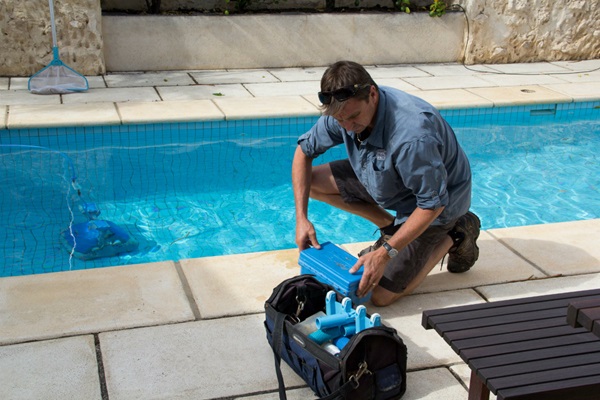
Managing chlorine levels and pH balance for optimal water quality
Chlorine Levels: Chlorine is essential for disinfecting pool water and killing bacteria, viruses, and algae. Maintain chlorine levels between 1.0 and 3.0 parts per million (ppm) to ensure effective sanitization without causing irritation to swimmers’ skin and eyes.
pH Balance: pH measures the acidity or alkalinity of pool water. Maintain pH levels between 7.2 and 7.6 to ensure optimal chlorine effectiveness, water clarity, and swimmer comfort. pH levels outside this range can lead to corrosion, scale formation, or inefficient chlorine disinfection.
Alkalinity and Calcium Hardness: Alkalinity acts as a buffer for pH, helping to stabilize fluctuations. Maintain alkalinity levels between 80 and 120 ppm to prevent pH swings. Calcium hardness refers to the concentration of dissolved calcium ions in the water, which helps prevent corrosion of pool surfaces. Maintain calcium hardness levels between 200 and 400 ppm.
Using a test kit to regularly check water chemistry
Frequency: Test the pool water at least once a week using a reliable test kit to monitor chlorine levels, pH, alkalinity, and calcium hardness. Test more frequently during periods of heavy pool usage, extreme weather, or after adding chemicals to the pool.
Testing Procedure: Follow the manufacturer’s instructions for using the test kit. Collect water samples from different areas of the pool, including the deep and shallow ends, and follow the recommended testing procedures to obtain accurate results.
Interpreting Results: Compare the test results to the recommended ranges for each parameter and adjust chemical levels as needed. Add chemicals gradually and retest after allowing sufficient time for the chemicals to disperse and equilibrate.
Troubleshooting common water chemistry problems
High Chlorine Levels: If chlorine levels are too high, dilute the water by adding fresh water to the pool or reduce chlorine dosage. Allow time for chlorine levels to dissipate naturally, or use a chlorine neutralizer to speed up the process.
Low Chlorine Levels: If chlorine levels are too low, shock the pool with a higher dose of chlorine to restore proper sanitation. Check for potential causes of chlorine loss, such as heavy rain, sunlight exposure, or organic debris.
pH Imbalance: Adjust pH levels using a pH increaser (sodium carbonate) to raise pH or a pH decreaser (sodium bisulfate) to lower pH as needed. Monitor alkalinity levels and adjust accordingly to stabilize pH fluctuations.
Cloudy Water: Cloudy water can be caused by improper filtration, high levels of dissolved solids, or inadequate circulation. Check and clean the pool filter, balance water chemistry, and ensure proper circulation and filtration to clear cloudy water.
The Art of Pool Care: Tips and Tricks for Maintaining a Pristine Pool
Maintaining a pristine pool involves implementing effective strategies for seasonal maintenance, utilizing technological advances in pool cleaning, and preventing algae growth.

Seasonal pool maintenance: Preparing your pool for summer and winter
Summer Preparation: Before the swimming season begins, perform a thorough cleaning of the pool, including skimming, vacuuming, and brushing. Test and balance water chemistry, inspect and clean pool equipment, and ensure proper circulation and filtration. Consider shock-treating the pool to remove any accumulated contaminants and algae spores.
Winterization: As winter approaches, take steps to protect your pool from freezing temperatures and harsh weather conditions. Lower the water level, drain and winterize pool equipment, and add winterizing chemicals to prevent algae growth and damage to pool surfaces. Cover the pool with a durable winter cover to keep out debris and sunlight.
Robotic pool cleaners and other technological advances in pool cleaning
Robotic Pool Cleaners: Invest in a robotic pool cleaner for hands-free and efficient cleaning of pool surfaces. These devices use advanced technology to navigate the pool, scrubbing and vacuuming debris while filtering the water. Robotic cleaners can save time and labor compared to manual cleaning methods.
UV-C Sanitizers: Consider installing a UV-C sanitizer as part of your pool’s filtration system to kill bacteria, viruses, and algae. UV-C light technology effectively disinfects pool water without the use of chemicals, reducing the reliance on chlorine and other sanitizers.
Smart Pool Technology: Explore smart pool technology options, such as Wi-Fi-enabled controllers and mobile apps, that allow you to monitor and control pool operations remotely. Smart features can help optimize energy efficiency, track water chemistry parameters, and receive alerts for maintenance needs.
Effective strategies to ensure your pool remains algae-free
Maintain Proper Water Chemistry: Regularly test and balance water chemistry parameters, including pH, chlorine levels, alkalinity, and calcium hardness. Algae thrive in unbalanced or poorly maintained water conditions, so keeping these parameters within recommended ranges is essential for algae prevention.
Routine Cleaning and Maintenance: Stay proactive with routine cleaning tasks such as skimming, vacuuming, and brushing to remove debris and prevent algae growth. Pay special attention to areas with poor circulation, such as corners, steps, and behind ladders.
Shock Treatment: Use shock treatment periodically to superchlorinate the pool and eliminate organic contaminants, algae spores, and bacteria. Shocking the pool helps maintain water clarity and prevent algae outbreaks, especially during periods of heavy usage or extreme weather.
Algaecide Treatment: Consider using an algaecide as a preventive measure to inhibit algae growth. Choose an algaecide product specifically formulated for your pool type and follow the manufacturer’s instructions for application and dosage.
Transforming Your Pool: Maintenance Considerations for Remodeling Projects
When planning a pool remodeling project, it’s important to consider maintenance considerations to ensure the longevity and efficiency of your pool.
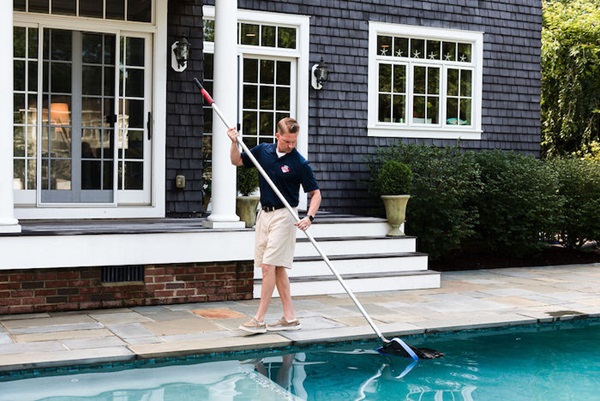
When to consider a pool remodel: Signs your swimming pool needs an update?
Visible Wear and Tear: Signs of aging such as cracks, chips, or discoloration on pool surfaces, tiles, or coping indicate the need for renovation.
Outdated Design: If your pool’s design or features no longer meet your aesthetic preferences or functional needs, it may be time for a remodel to update and modernize the space.
Functional Issues: Poor circulation, inadequate filtration, or frequent equipment malfunctions are indicators that your pool’s infrastructure may need upgrading or repair.
Safety Concerns: If your pool lacks safety features such as fencing, alarms, or slip-resistant surfaces, consider remodeling to enhance safety for swimmers, especially children and pets.
Incorporating maintenance efficiency into your pool remodel plans
Efficient Filtration and Circulation: Upgrade to energy-efficient pumps, filters, and circulation systems to improve water quality and reduce energy consumption.
Automation and Smart Technology: Install automation systems and smart devices to monitor and control pool operations remotely. These features can optimize energy usage, automate maintenance tasks, and provide real-time alerts for issues.
Low-Maintenance Materials: Choose durable and easy-to-clean materials for pool surfaces, decking, and landscaping to minimize upkeep and maintenance requirements.
Sustainable Features: Consider eco-friendly options such as LED lighting, solar heating, and water-saving technologies to reduce environmental impact and operating costs.
How can professional cleaning services save you time during a pool remodel?
Preparation and Cleanup: Professional cleaning services can assist with prepping the pool area before remodeling begins, such as draining the pool, removing debris, and protecting surrounding landscaping and structures.
Progress Monitoring: During the remodel process, professional cleaners can monitor progress, address any cleanliness issues, and ensure that the work site remains safe and accessible.
Post-Construction Cleaning: Once the remodel is complete, professional cleaners can perform a thorough cleaning of the pool, surfaces, and surrounding areas to remove dust, debris, and construction residue.
Maintenance Training and Support: Professional cleaners can provide guidance on post-remodel maintenance tasks, recommend products and techniques, and offer ongoing support to help you keep your newly renovated pool in pristine condition.
By considering maintenance efficiency and leveraging professional cleaning services during a pool remodel, you can ensure that your renovated pool remains beautiful, functional, and easy to maintain for years to come. Prioritize efficiency, sustainability, and safety to maximize the value and enjoyment of your investment.

Meet David Thomas, a seasoned professional with nearly 8 years of experience specializing in inspecting and resolving issues related to swimming pools. With his expertise and meticulous attention to detail, David ensures the safety and functionality of pools, making them a refreshing oasis for all to enjoy. Whether it’s troubleshooting equipment or maintaining water quality, David’s proficiency guarantees top-notch solutions tailored to meet every pool owner’s needs.
